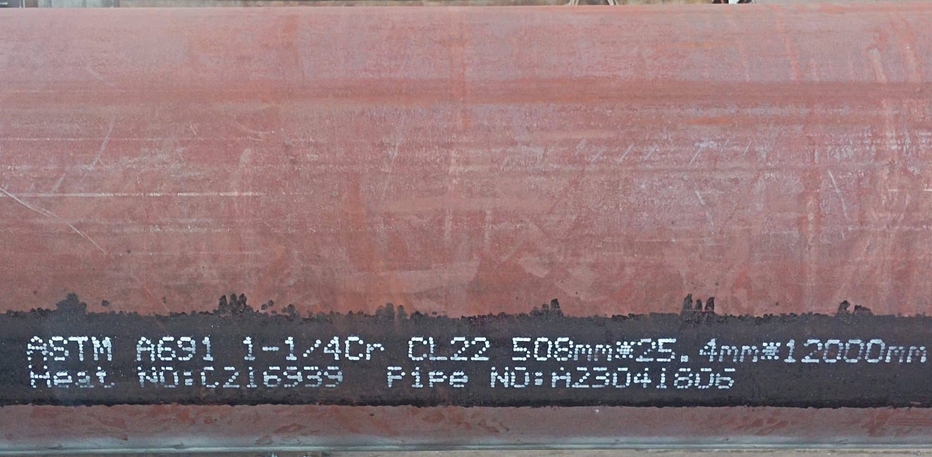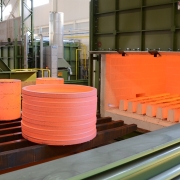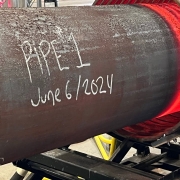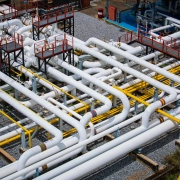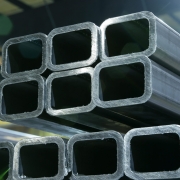ASTM A671 Low-Temp Carbon Steel Pipe: A Comprehensive Guide
Introduction
In the demanding oil and gas industry, material selection is critical to ensure piping systems’ long-term durability and performance. ASTM A671 low-temp carbon steel pipe is a trusted standard in this field, especially in environments where the combination of low temperatures, high pressures, and corrosive conditions can be challenging. This blog provides a detailed overview of ASTM A671, addressing its properties, applications, manufacturing process, and how it provides solutions for everyday challenges in the oil and gas industry.
What is ASTM A671 Low-Temp Carbon Steel Pipe?
ASTM A671 is a specification that covers electric-fusion-welded steel pipes using pressure vessel-quality plates. These pipes are designed for use in low-temperature environments, with materials suited for conditions where brittle fracture can be a concern. The carbon steel pipes specified by ASTM A671 are widely used in critical piping systems that must operate safely under extreme temperatures.
Key Features:
Low-temperature service: ASTM A671 pipes are ideal for applications in cryogenic and low-temperature environments, preventing brittleness.
Pressure-resistant: These pipes are built to handle high-pressure environments essential for oil and gas transportation.
Customizable: Depending on the desired tensile strength, notch toughness, and corrosion resistance, pipes can be supplied in different grades.
Manufacturing Process
Manufacturing ASTM A671 pipes involves electric-fusion welding (EFW) of carbon steel plates. This process ensures a high-quality weld seam, providing the strength and durability needed for demanding service conditions.
Steps in the Manufacturing Process:
Selection of Pressure Vessel Plates: Carbon steel plates designed for pressure vessel applications (commonly per ASTM A516) are selected for their superior mechanical properties.
Forming: These plates are rolled into cylindrical forms.
Electric-Fusion Welding (EFW): Electric welding uses electric fusion, which involves heating the metal and fusing it without adding filler material, resulting in a high-integrity weld seam.
Heat Treatment: The pipes undergo heat treatment to enhance their toughness and resistance to brittle fracture, especially for low-temperature applications.
Testing: Each pipe undergoes rigorous testing for pressure, mechanical properties, and low-temperature performance to ensure compliance with ASTM A671 standards.
Mechanical Properties: ASTM A671 Low-Temp Carbon Steel Pipe
ASTM A671 pipes are available in various grades based on mechanical properties and the type of heat treatment used. The most common grades for low-temperature applications include:
Grade CC60: Yield strength of 240 MPa and tensile strength ranging from 415 to 550 MPa.
Grade CC65: Yield strength of 260 MPa and tensile strength ranging from 450 to 585 MPa.
Grade CC70: Yield strength of 290 MPa and tensile strength ranging from 485 to 620 MPa.
Each grade provides different toughness, strength, and low-temperature performance levels, allowing for tailored solutions based on specific project requirements.
Applications: ASTM A671 Low-Temp Carbon Steel Pipe
ASTM A671 pipes are used extensively in the oil and gas sector due to their ability to handle the harsh environmental conditions typical in upstream, midstream, and downstream operations.
Pipeline Systems: ASTM A671 pipes are used in pipeline systems to transport crude oil, natural gas, and other hydrocarbons in low-temperature regions, such as offshore platforms or Arctic pipelines.
Pressure Vessels: These pipes are utilized in pressure vessel applications where safety and integrity are critical under low-temperature and high-pressure conditions.
Refinery and Petrochemical Plants: These pipes are found in the low-temperature processing areas of refineries and petrochemical plants, where temperatures can drop to cryogenic levels.
LNG Facilities: In liquefied natural gas (LNG) facilities, the piping systems must maintain performance at cryogenic temperatures, making ASTM A671 an excellent choice for such environments.
Solutions to Common User Concerns
1. Low-temperature brittleness
A common concern in oil and gas pipelines is material failure due to low-temperature brittleness, which can lead to catastrophic consequences. ASTM A671 addresses this by carefully selecting pressure vessel-quality steel and using heat treatments to improve toughness. Additionally, rigorous testing ensures the pipes can handle low-temperature conditions without cracking or fracturing.
Solution: Select the appropriate grade of ASTM A671 based on your project’s specific environmental conditions. For sub-zero environments, opt for grades like CC65 or CC70, which are optimized for low-temperature performance.
2. High-Pressure Resistance
Pipelines and pressure vessels in oil and gas operations are frequently exposed to high pressures. The ASTM A671 specification ensures that these pipes have the strength to withstand such conditions, reducing the risk of rupture or leaks.
Solution: When operating under high-pressure environments, ensure that the pipe is tested and certified for the maximum operating pressure (MOP) required by your system.
3. Corrosion Resistance
Corrosion is a significant concern in oil and gas operations, particularly offshore and highly corrosive environments. While ASTM A671 pipes are not inherently corrosion-resistant like stainless steel, they can be coated or lined with specialized materials to enhance corrosion resistance.
Solution: To extend the service life of ASTM A671 pipes in corrosive environments, consider applying internal linings or external coatings. Additionally, regular maintenance and inspections can help mitigate corrosion issues.
4. Compliance with Standards
Oil and gas companies often need to ensure that their materials comply with multiple international standards for safety and performance. ASTM A671 pipes are produced in compliance with strict industry standards, ensuring their use in a wide range of projects worldwide.
Solution: Verify that the supplier provides full certification of compliance with ASTM standards, including mechanical property testing, low-temperature toughness testing, and pressure testing.
Testing and QC/QA
To ensure the integrity and performance of ASTM A671 pipes, various tests are conducted during the manufacturing process:
Hydrostatic Testing: Each pipe is tested under high pressure to ensure that the weld is free of leaks or flaws.
Charpy Impact Testing: Performed to evaluate the material’s toughness at low temperatures.
Ultrasonic Testing: Non-destructive testing to detect internal flaws or discontinuities in the weld.
Radiographic Testing: Provides a visual inspection of the weld to ensure uniformity and the absence of defects.
These stringent tests ensure the pipes can operate safely in critical low-temperature environments.
Conclusion: Ideal for the Oil and Gas Industry
The oil and gas industry demands materials that can handle extreme conditions, including low temperatures, high pressures, and corrosive environments. ASTM A671 low-temp carbon steel pipe is engineered to meet these challenges head-on. By offering superior toughness, strength, and weld integrity, these pipes are essential for ensuring hydrocarbons’ safe and efficient transport in even the harshest conditions.
Low-Temperature Service: ASTM A671 pipes are engineered for low-temperature environments, reducing the risk of brittle fracture.
Pressure-Resistant: These pipes can withstand high-pressure conditions commonly found in oil and gas transportation systems.
Customizable: ASTM A671 pipes come in various grades, allowing for tailored solutions based on project specifications.
For oil and gas companies looking for reliable and robust piping solutions, ASTM A671 low-temp carbon steel pipe offers a dependable option that ensures safety, performance, and compliance in demanding environments.
This guide focuses on material performance, solutions to common issues, and quality assurance, providing users with the information they need to make informed decisions about using ASTM A671 pipes for low-temperature oil and gas applications.



